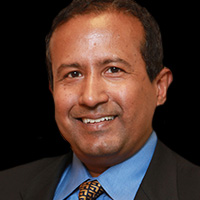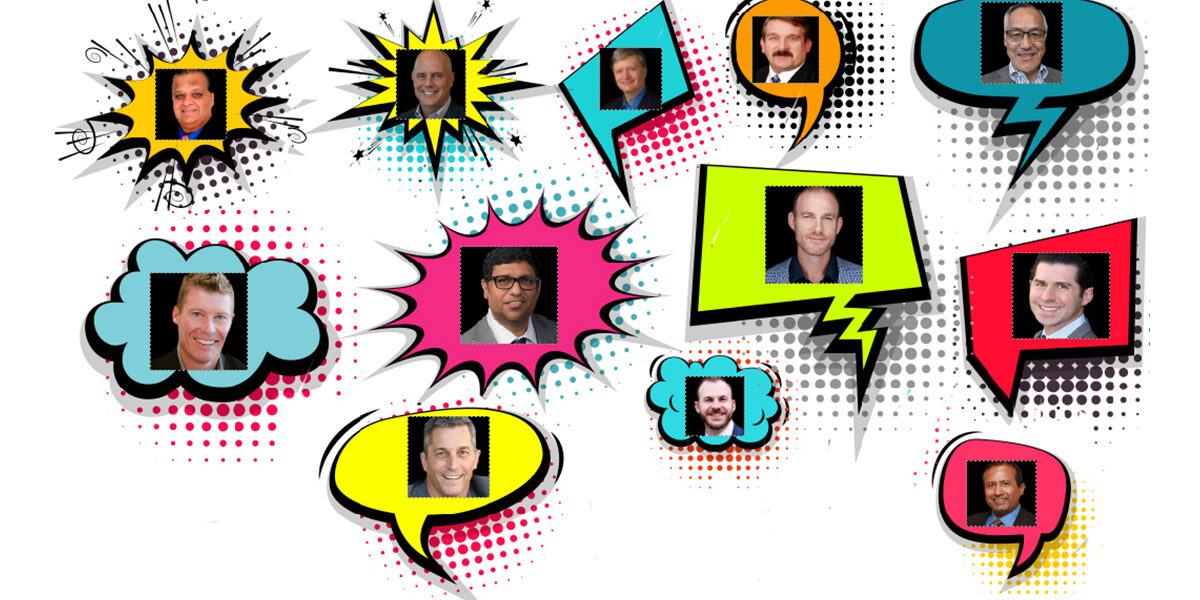Innovations Award Winners Speak Out
The PROGRESS in Lending Innovations Award Winners talk about the future of mortgage lending. Mortgage executives came together to attend PROGRESS in Lending Association’s Eleventh Annual Innovations Awards Event digitally. We named the top innovations of the past twelve months. After that event, we wondered what would happen if we brought together executives from the winning companies to talk about mortgage technology innovation. Where do they see the state of industry innovation right now? And what innovation is it going to take to get our industry really going strong? To get these and other questions answered, we got some of the winners together. In the end, here’s what they said:
Q: Some say innovation has to be sweeping change. Others say innovation can be incremental change. How would you define innovation?
LEONARD RYAN: As we have moved into more SaaS and web-based solutions, the opportunity presents itself to offer substantial improvements without a major carve out or blowing up of the boxes. If we only look at sweeping changes, then the auto industry would count Autopilot. Would the addition of Blind Spot Monitoring, Collision Avoidance and Variable Cruise Control introduced over five years be discounted? The mortgage side only count eNotes and discount the innovations that moved us there? Therefore I believe it is both.
TEDD SMITH: Innovation is when thought leadership and preparation meet timing and market conditions to affect goals and objectives of a visionary or vision that can refined over time to create ever increasing value to a business or consumer market. Innovation is both incremental and sweeping…incremental for those investing in it and sweeping for those benefiting from it.
“As we have moved into more SaaS and web-based solutions, the opportunity presents itself to offer substantial improvements without a major carve out or blowing up of the boxes.”

Leonard Ryan, QuestSoft An NContracts Company
NOOR PUNJWANI: I believe it is a combination of both. In some areas, we have seen significant technology innovations and adaptations, while in some places, there are many tech opportunities. Mortgage originations is a complex, interdependent and extensive process. No one tech solution will resolve or transform the entire business. It is a combination of small, incremental tech evolutions. For more than ten years, Awesome Technologies (ATI’s) highly respected staff has provided lenders with mortgage technology expertise. We have created custom software and services to improve the lending process, streamline operations, lower origination costs, enhance borrower retention, while helping lenders create customers for life.
JOSH FRIEND: Innovation is often a new product, but it can also be a new way of doing something or even a new way of thinking. I don’t think innovation has to be mutually exclusive to sweeping change or incremental change. This past year has taught us that both apply. We saw innovation introduced to quickly respond to doing business during a pandemic(i.e., digital solutions that allowed us to engage our customers when we couldn’t meet face to face), which resulted in sweeping change. As rates dropped and volumes increased, we saw lenders look for new ways to streamline the origination process, which were incremental in nature.
“The mortgage industry as it relates to innovation is like the last car on a roller coaster. Innovation is pulling the mortgage industry over steep inclines, declines, and loopty-loops whether the passengers (who are kicking and screaming) like it or not.”

Tedd Smith, FirstClose
TOM SHOWALTER: Innovation can be either evolutionary (incremental) or revolutionary (sweeping). In the overall, we subscribe to innovation as largely an enterprise wide, sweeping metaphor bringing in profound change and hope our clients pursue the larger metaphor. They will get the greater return from the bigger idea, that is innovation as sweeping.
The kind of innovation we have attempted in Candor leaves the precise nature of the innovation up to our clients. If a client wants to use Candor in an evolutionary manner, if that suits their “innovation” goals, then they can proceed in that manner. However, if the client wants to revolutionize how they do business, they can use Candor in an means to invoke sweeping change.
“Mortgage originations is a complex, interdependent and extensive process. No one tech solution will resolve or transform the entire business.”

Noor Punjwani, Awesome Technologies Inc.
MICHAEL KELLEHER: Innovation is an incremental change behind the scene by the early adopters. The early majority begins to notice these leaders of change at the conferences and within their enterprises as they roll different newcomers out. Eventually, the late majority wakes up one day and sees a sweeping change in the industry, and adapts as quickly as possible. While native mobile deployment has been delayed we see a huge demand on the horizon to meet user behavior.
RICHARD NOVAK: Defining innovation in terms of the change or impact that results can lead to innovation that often doesn’t benefit anyone. Innovation is about identifying needs and solving problems. Successful innovation starts with a mindset that focuses on falling in love with the problem and not with any particular solution. This empowers you to look at challenges from multiple perspectives, pivoting when necessary, without the drive to apply existing solutions to problems they cannot solve. It’s the agility to react quickly when something changes in the environment. Change, whether sweeping or incremental, is just the result of some innovative person or company addressing the problem in the best way possible.
“Lenders are looking for ways to modernize their approach to lending, which includes leveraging technology as they shift from refi’s to purchase while going from an approach that is transaction-focused to one that is now focused on creating customers for life.”

Josh Friend, Insellerate
HANS RUSLI: Innovation can be broad and comprehensive from a macro level or less wide-ranging yet still have a transformational effect. One necessary component is first having a vision and strategy that also contemplates the ability to change as more is learned during the process. In either, incremental or sweeping, innovation must produce demonstrable and measurable benefits to stakeholders in improved quality, increased efficiency and certainly for the innovator, additional revenue.
JOE ZEIBERT: Innovation often seems like it’s both sweeping and incremental at the same time. From an organizational standpoint, innovation can seem sweeping because if you look at where the industry was 10 years ago versus now, you can see a major difference in how it operates. However, the reality is that it’s more of an incremental shift. There wasn’t this huge, sudden wave of innovation. Lenders made and continue to make changes to stay ahead of the competition and improve operations, continually evolving to meet different needs and different scenarios to increase efficiencies for their employees and meet customer expectations. Here at Nomis, we define innovation as being a market leader, staying one step ahead of the mortgage lender’s needs and offering the tools necessary to facilitate advanced decisioning through sophisticated technology and actionable analytics.
“Innovation can be either evolutionary (incremental) or revolutionary (sweeping). In the overall, we subscribe to innovation as largely an enterprise wide, sweeping metaphor bringing in profound change and hope our clients pursue the larger metaphor.”

Tom Showalter, Candor
HASSAN RASHID: The definition of innovation is neither sweeping nor incremental change. Successful innovation has high potential to cause any number of changes, whether they be revolutionary, sweeping or incremental. Innovation can best be described as a change engine which requires three things for it to run smoothly: change, courage, and creativity.
Although it may seem paradoxical, innovation must first be fueled by change in order to cause change. Luckily, change is in abundance – we are all living in a period of change. It’s not just sweeping or incremental, it’s exponential – increasing at an increasing rate. Over the course of my professional career, I have witnessed how rapidly changes can occur in our society, sometimes in unexpected ways. All too often, people enter a state of denial and shy away from those changes. The people who embrace disruption baring down on them – whether it be technological, economic, societal, etc. – are the ones with a chance to end up at the top of the ladder. To do that, you must be willing to change.
“Fintech is thriving, and with each breakthrough, the lender’s attention becomes further diluted. The next step is to figure out how to sell a suite of fintech services or continue to be frustrated by all the software expenses rising while the revenue plateaus.”

Michael Kelleher, easy mortgage apps
Willingness to change is also not enough though – people must also be willing to embrace their creativity. Disruption creates situations where there is no playbook, no precedents, and no GPS – where the only thing you can do is improvise. In 2003, Nokia released the best-selling cell phone of all time, the Nokia 1100. They were growing at an unprecedented rate as the undisputed global leader in mobile phones for nearly a decade and widely considered one of the most innovative companies in the world. Then Apple came out with the first iPhone in 2007, and we all know what happened next.
Even the ones at the top of the innovation ladder can become stagnant and stunt their own creativity. Nokia’s critical failure – they thought they were in the cell phone business, while Apple and Steve Jobs believed they were in the creativity business. No matter the industry, we all work in the creativity business. There is always room for improvement, but to be able to push the frontiers of your field, it also takes courage. Courage is the difference-maker that drives innovation to market. Put simply – innovation is defined as exponential change fueled by creativity and courage embedded at the heart of a company’s culture.
“From our perspective, innovation is thriving here, which is creating its own challenges for lenders. Today, mortgage executives are offered a wide array of technology solutions, each designed to solve an aspect of the overall origination or mortgage servicing problems.”

Richard Novak, fiserv
CHETAN PATEL: Innovation doesn’t have to be something that is comparable to the “Big Bang” theory. It comes in many forms. At Verity, we are very focused on collaborating with our clients and industry thought leaders to produce innovation and new ways of producing better results. Many of Verity’s most innovative practices have come from communicating with our customers, understanding their biggest pain-points, and then creating solutions that produce better processes, better efficiencies and, occasionally, true innovation. Innovation happens when you apply and scale novel ideas that have practical applications for your customers.
DAN BAILEY: I believe innovation is incremental. After all, we had the typewriter before the word processor, the word processor before a personal computer and the iPod before the iPhone.
It is a mistake to think an innovation must be categorical or sweeping to be meaningful or impactful. Frankly, that type of thinking is very damaging and can prevent organizations from achieving meaningful improvement.
“The mortgage industry was moving with fits and starts toward a digital model prior to the onslaught of the pandemic. That effort accelerated and is now the desired state by the entire industry.”

Hans Rusli, IndiSoft
Q: How would you define the state of innovation in the mortgage industry? Is it thriving or in a state of decay?
LEONARD RYAN: The pandemic in one year did more than 19 years of work trying to move companies toward eSign and remote notaries. The industry still has many providers that profit despite inefficiencies, but I see innovations that reduce days from the lending process as being the most productive. The minimum we can get is CFPB/TRID regulatory requirements plus one day. The whole industry should never stop partnering and innovating until we reach that goal.
TEDD SMITH: The mortgage industry as it relates to innovation is like the last car on a roller coaster. Innovation is pulling the mortgage industry over steep inclines, declines, and loopty-loops whether the passengers (who are kicking and screaming) like it or not. They are the last car, but they get the biggest thrill. It is thriving. The mortgage industry is finally embracing technology and innovation, but those who don’t get on board are going to miss the ride of their life.
NOOR PUNJWANI: It is thriving, especially since 2020. It has gained significant momentum. This momentum will keep growing, and the pace of tech will increase. Consumers will have more options, simpler, economical, etc. We will notice certain areas where we will see faster tech innovations – these will include lowering the cost of operations, automation, low touchpoints, a higher degree of a hands-off approach, more self-service tools, simple, and rapid implementation etc., The right combination of innovative technology and people will be a true differentiator moving forward in the mortgage market.
“Innovation in the mortgage industry is thriving, and certainly headed more and more towards digital automation. While it’s somewhat catching up with the rest of the world, one constant remains: the end consumer and an unyielding focus on optimizing their experience.”

Joe Zeibert, Nomis
JOSH FRIEND: I think innovation is thriving in the mortgage industry today. Lenders are looking for ways to modernize their approach to lending, which includes leveraging technology as they shift from refi’s to purchase while going from an approach that is transaction-focused to one that is now focused on creating customers for life.
Lenders are embracing customer experience solutions that deliver Lead Management, Sales Enablement, Engagement, a Robust Mortgage Specific Content Library, and Data Intelligence all in one comprehensive and highly scalable platform. These platforms must seamlessly fit into their tech stack and allow them to communicate at an enterprise level across all lending channels retail, wholesale, consumer direct throughout all of their branches, with each of their loan officers and their borrowers from one platform. This allows lenders to gain data alignment to leverage actionable insights to deliver the right message at the right time through the right channel to the right individual, creating customers for life.
TOM SHOWALTER: The state of innovation in the mortgage industry is “unprofitable.” Lenders are hungry for a true ROI from innovation and have been frustrated with the many attempts at same. Many innovative technologies are simple additional costs and generate a very low ROI to lenders. It is imperative that a technology company determine how the lender will generate a return. This is hard to do and not for the faint of heart.
“The definition of innovation is neither sweeping nor incremental change. Successful innovation has high potential to cause any number of changes, whether they be revolutionary, sweeping or incremental.”

Hassan Rashid, Tavant
MICHAEL KELLEHER: Fintech is thriving, and with each breakthrough, the lender’s attention becomes further diluted. The next step is to figure out how to sell a suite of fintech services or continue to be frustrated by all the software expenses rising while the revenue plateaus. Banks working against challenger banks are facing the same problem. The regulatory environment needs to help mortgage companies with clarity on how they can leverage cross-selling services provided by Fintechs.
RICHARD NOVAK: From a distance, it’s easy to see why some would consider our industry a business in decay. There is no shortage of problems in a complex process that most consumers would rather avoid but cannot because it enables them to complete a transaction that changes their lives for the better. But beneath all that is an industry full of opportunity for anyone who truly loves to solve complicated problems. From our perspective, innovation is thriving here, which is creating its own challenges for lenders. Today, mortgage executives are offered a wide array of technology solutions, each designed to solve an aspect of the overall origination or mortgage servicing problems. Because the problems are evolving, choosing the right solution must seem like a view through a kaleidoscope. There is a need to innovate in order to help integrate applicable innovations into an overall solution/ecosystem that covers their institutions and empowers them to meet the needs of their borrowers in ways that earn their customers’ satisfaction. The ongoing work of delivering that mortgage lending ecosystem, as much as anything else, convinces us that innovation is thriving in our business, making this a very exciting place to be.
HANS RUSLI: The mortgage industry was moving with fits and starts toward a digital model prior to the onslaught of the pandemic. That effort accelerated and is now the desired state by the entire industry. Barriers that existed from policymakers concerning issues such as state adoption of remote online notary services (RON) have been removed. Key players such as the GSEs and regulators have been quickly reshaping regulations to not only pave the way for innovation but to enable it with such policies as the Compliance Assistance Sandbox at the CFPB, which allows companies to test new technology or services for a limited time while sharing data with the agency. This policy minimizes regulatory risk that may affect new financial products and services.
“Innovation doesn’t have to be something that is comparable to the “Big Bang” theory. It comes in many forms. At Verity, we are very focused on collaborating with our clients and industry thought leaders to produce innovation and new ways of producing better results.”

Chetan Patel, Verity Global Solutions
JOE ZEIBERT: Innovation in the mortgage industry is thriving, and certainly headed more and more towards digital automation. While it’s somewhat catching up with the rest of the world, one constant remains: the end consumer and an unyielding focus on optimizing their experience. With that in mind, lenders should focus on building the right mortgage tech stack and leveraging the many advancements in new technologies that can truly fuel a great customer experience. By investing in actionable data and sophisticated technology, mortgage lenders effectively arm themselves with the tools necessary to better evaluate and understand the full scope of their pricing strategies. Further, this insight enables them to confidently communicate that information to consumers, enhancing their experience to ultimately win more business.
HASSAN RASHID: Innovation is thriving in all financial and tech sectors, but especially in the mortgage industry. The pandemic has caused major disruption, but also has been the spark for significant trends unfolding in the mortgage space. Customer expectations are higher than ever. More and more laws and stricter regulatory requirements continue to slow down essential processes. Whenever there are continuous operational challenges like these, that means there is room for innovation.
As a result, we are seeing widespread digitizing enabled by straight-through processing, as well as application of AI and ML models to predict outcomes across all mortgage functions. The evidence of thriving innovation – lower origination costs, less credit losses, faster processing, more intuitive credit worthiness prediction, better risk-assessment, and much more. Innovation is happening at the incremental level, all the way down to the way mortgages are serviced and default is managed. AI and ML is able to estimate any person’s ability to pay back a loan. Lenders have the capability to decrease the cost of collection, thereby improving customer satisfaction and retention.
We are seeing AI and ML improve retention at a whole new level – tools can predict customer behavior three to six months in advance and formulate personalized offerings. Never before has the mortgage industry been able to conceptualize life-long borrowing customers until now. The opportunity to forecast customer lifetime value beyond points previously thought possible means customer satisfaction must be a focal point for forward-thinking providers. Especially with major demographic and generational shifts happening in the market. Gen Z is aging into the lending “sweet spot” and women are making more money and financial decisions than ever before. Loyalty to existing institutions is already in flux with the gaining popularity of neo-normal digital startups. Thriving is one way to define the state of innovation within the mortgage industry, but I prefer to call it exponential.
“It is a mistake to think an innovation must be categorical or sweeping to be meaningful or impactful. Frankly, that type of thinking is very damaging and can prevent organizations from achieving meaningful improvement.”

Dan Bailey, WFG Enterprise Solutions
CHETAN PATEL: Innovation is thriving in the mortgage industry. However, regulatory issues constrain how we utilize technology and, as a result, the actual adoption of new technology is much slower than it is in industries that are not so highly regulated. As a technologist, I look at how lenders manufacture and service loans. Process improvement and the utilization of technology more efficiently is a catalyst for innovation, improving the overall lending process, customer experience and margins.
Here at Verity we are focused on AI-enabled bots that accelerate innovation and process efficiency. We are rolling out new products like Verity’s LoanJourney and appraisal tool software. We encourage you to reach out and test our tools and our team!
DAN BAILEY: As it applies to the mortgage industry, innovation is thriving. E-closing, iBuyers, point-of-sale integrations and data gathering, appraisal waivers, fee integrations, AI and process automation, to name just a few examples. If anything, it is hard to keep up with the rapidly evolving mortgage industry.

The Place for Lending Visionaries and Thought Leaders. We take you beyond the latest news and trends to help you grow your lending business.



